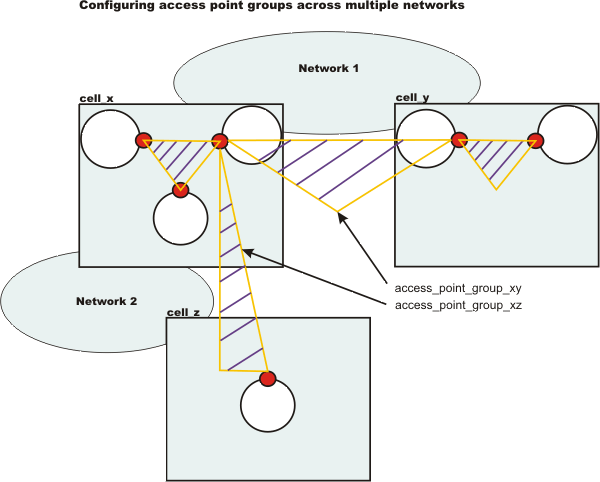Advanced core group bridge configurations
This topic describes advanced core group bridge configurations. These configurations are not performed as often as the typical core group bridge between core groups that are in different cells.
Advanced configuration scenarios
The most common core group bridge configuration is between two core groups that are in different cells on a single network. See Core group communications using the core group bridge service for more information about this common scenario. The scenarios that are described in this topic are for advanced configuration situations. There are four types of communication between core groups that you can configure:
- Communication between core groups that are in the same cell
- Communication within the cell and outside of the cell
- Communication between core groups across different networks
- Communication between core groups using a proxy peer access point
Communication between core groups that are in the same cell
All core groups that are in the same cell must be configured to communicate with each other. To configure core group communication within a cell, create one access point group with one core group access point for each core group. Select one or more servers to be core group bridge servers, and define a bridge interface for each server. All the bridge interfaces that are in an access point group that connects core groups that are in the same cell must have a node, server, and chain combination that resolves to the same port. To make sure all the bridge interfaces resolve to the same port, you can configure all the bridge interfaces use the same chain name. The following image shows an example of three core groups that are in the same cell and are connected by one access point group. The sample configuration shows how communication between core groups in the same cell is configured in the administrative console.Figure 1. Communication between core groups that are in the same cell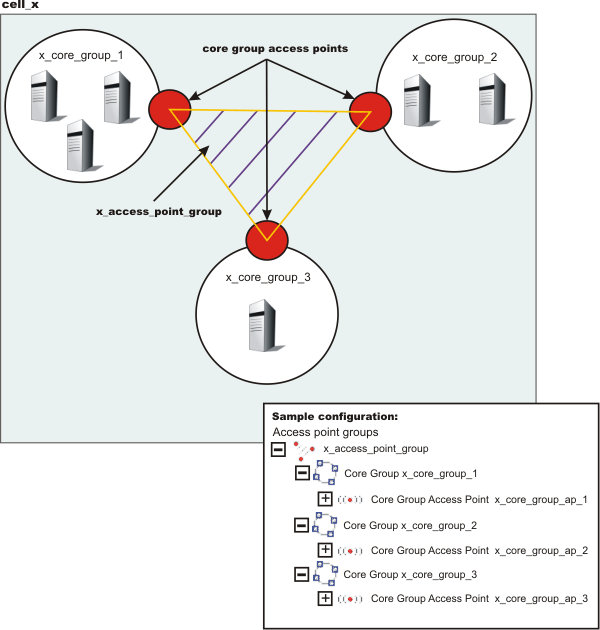
See Configure communication between core groups that are in the same cell for more information.
Communication within the cell and outside of the cell
The following example illustrates a configuration between three core groups that are in three different cells. Each cell has one access point group for communication between core groups in the cell. Each cell also has a defined access_point_group_xyz access point group, which contains one core group access point group for the core group that is in the cell, and one core group access point for each of the core groups in the other two cells.
Figure 2. Communication between core groups that are in the same cell with core groups outside of the cell
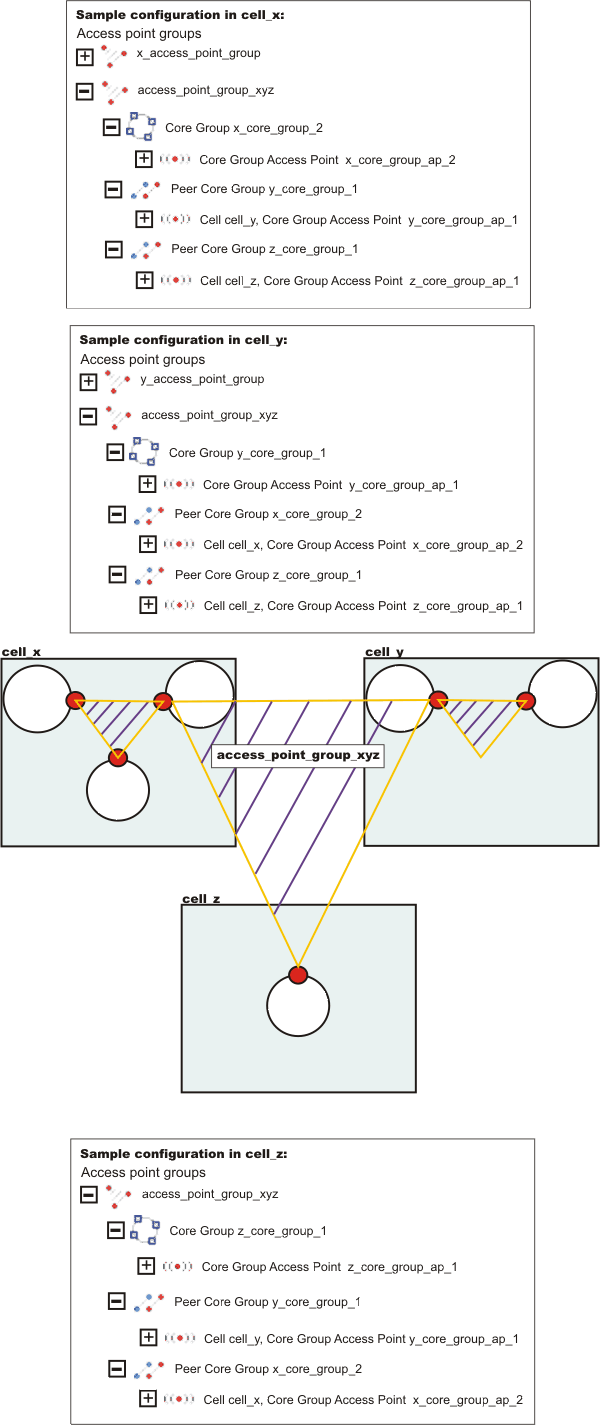
The following example shows the relationship between bridge interfaces and peer ports for the communication between thecell_x cell and the cell_z cell.
In the cell_x cell, two bridge interfaces are defined. In the cell_z cell a peer access point exists for the x_core_group_ap_2 core group access point with peer ports defined that correspond to the bridge interface information that is defined in the cell_x cell .
Figure 3. Bridge interfaces in one cell correspond to peer ports in the other cell
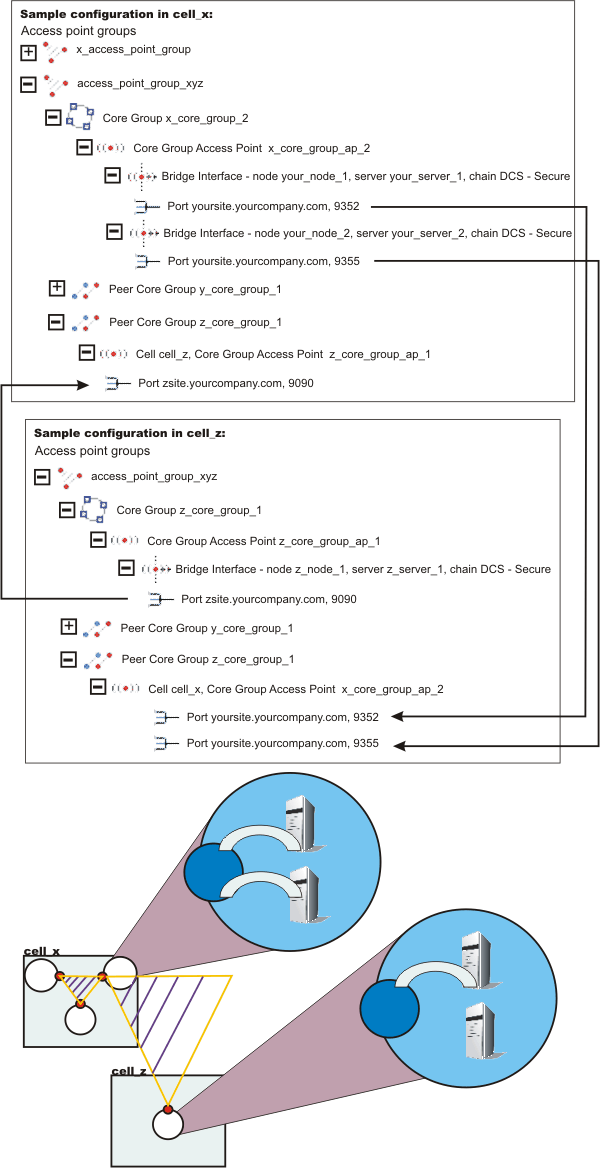
As a result, the core_group_x , core_group_y and core_group_z core groups can communicate with each other.
Communication between core groups across different networks
In this scenario, one core group is configured to communicate with two or more core groups in different cells across two or more networks. For example, a core group in the cell_x cell needs to communicate with core groups in the cell_y and cell_z cells. Create two access point groups in the cell_x cell. Theaccess_point_group_xy access point group, in the cell_x cell contains a core group access point and a peer access point for the core group in the cell_y cell. The access_point_group_xz access point group in the cell_x cell contains a core group access point and a peer access point for the core group in the cell_z cell. The cell_y cell has an access_point_group_xy access point group, which has a core group access point and a peer access point for the cell_x cell. The cell_z cell has an access_point_group_xzaccess point group, which has a core group access point and a peer access point for the cell_x cell. Figure 4. Core group communication across different networks
Communication between core groups using a proxy peer access point
Use a proxy peer when the core groups cannot directly communicate. The two core groups must have access to a single core group that can pass information between the two core groups. To understand what a proxy peer access point does, consider a connecting flight when flying on an airplane. To fly from Pittsburgh to London you first have to fly to New
York City, where you change planes and then fly to London. New York City is the proxy peer access point for London. When defining a proxy peer, the x_core_group_2 core group in the cell_x cell cannot communicate directly with the core group in the cell_z cell. However, both core groups can communicate with the core group in the cell_y cell.
To configure communication between the cell_x cell and thecell_z cell,
configure two access point groups. The core group access point in the cell_y cell is in both the access_point_group_xy and access_point_group_yz access point groups. The following image shows an overview of a proxy peer configuration.Figure 5. Core group communication using a proxy peer access point
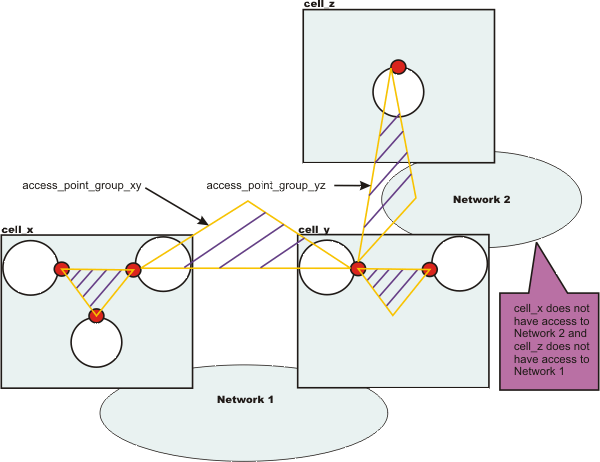
See Configure core group communication using a proxy peer access point for more information.
Related tasks
Configure the core group bridge service
Creating advanced core group bridge configurations
